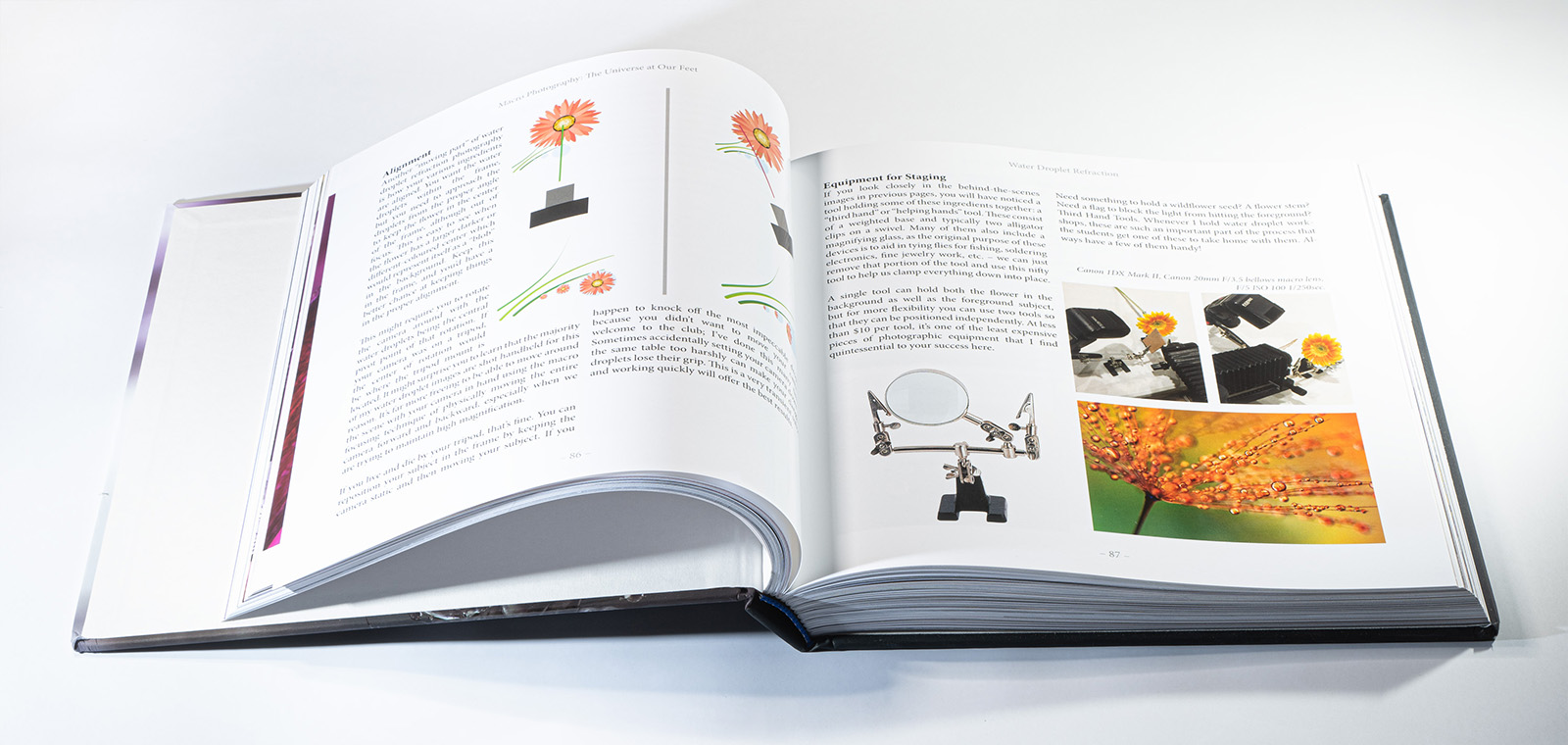
by successfulbob | book review, inspiration, macro, photography
Macro Photography: The Universe at Our Feet by Don Komarechka
Gotta tell ya, if you are wanting to start macro photography, or want to improve the macro work you are now creating, get this book. I’ve been a fan of Komarechka’s work ever since I saw his first snowflakes photos. He’s a master at his craft with a healthy curiosity that has him pushing the limits of the medium.
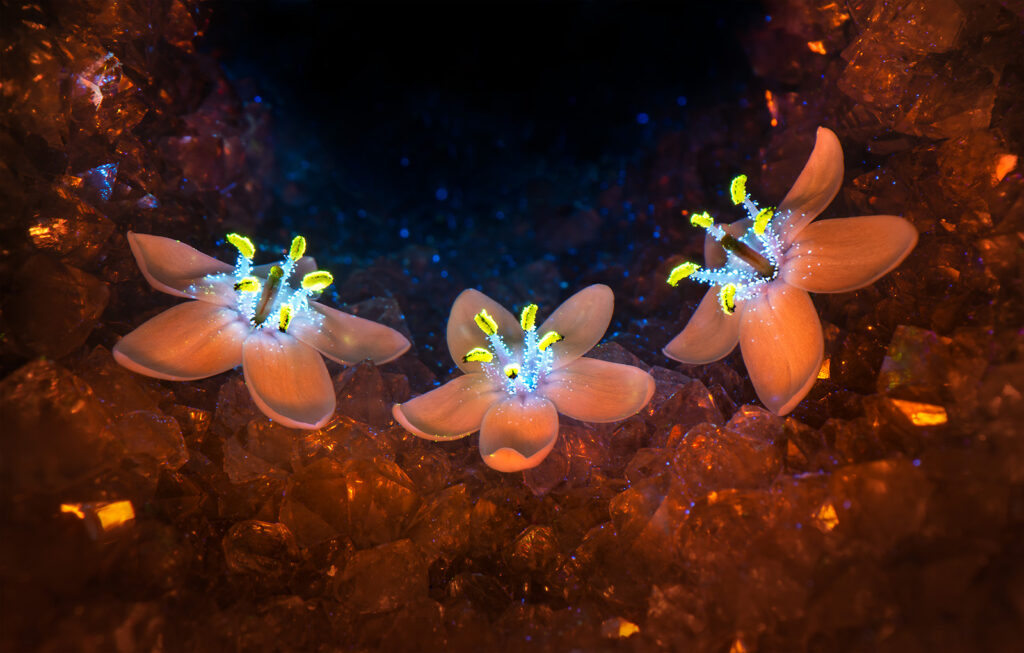
The layout is clean and easy to read with clear illustrations. © Don Komarechka
Worth the price
When I first saw the price on the book I was a little hesitant. So glad I pulled the trigger and got it. This is a solid reference on macro photography that beginners and experienced photographers will enjoy. I wrote a more in-depth review over at PhotoFocus. You can check it out here. https://photofocus.com/reviews/a-masterclass-in-macro-with-new-book-from-don-komarechka
Yours in Creative Photography, Bob
See more of Don’s work here. https://www.donkom.ca
You can order a copy of the book here. https://amzn.to/3zkt6Qf Remember I am an Amazon affiliate and will receive a small fee if you use this link.
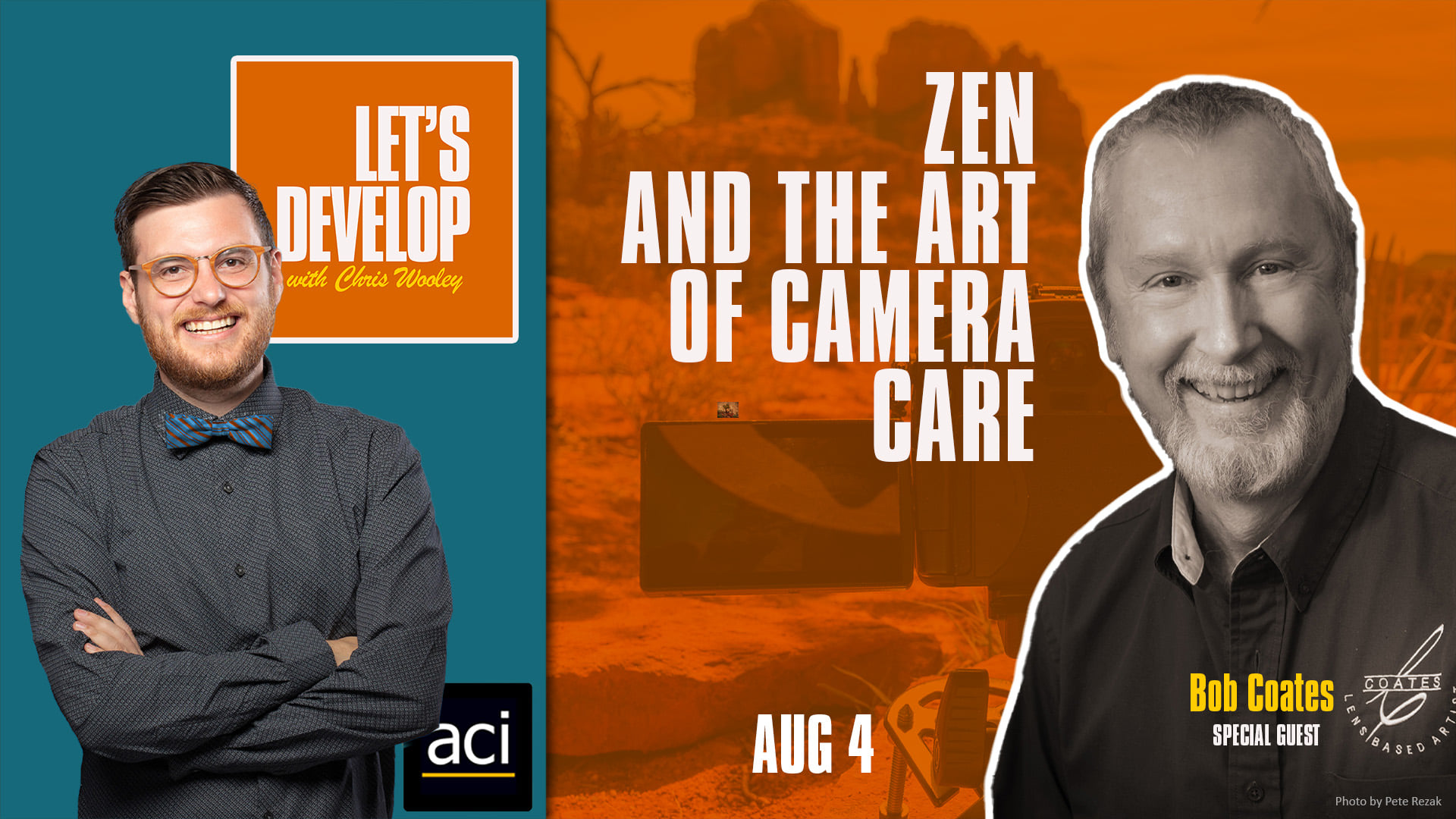
by successfulbob | photography
I’ll be chatting with Chris Wooley about tips and tricks for taking care of, and supporting, your camera and computer gear. This will be a webinar packed with information. I’ll also be sharing a resources file with links to the material covered including some discounts I have worked out. Link below to sign up at no charge. See you there!
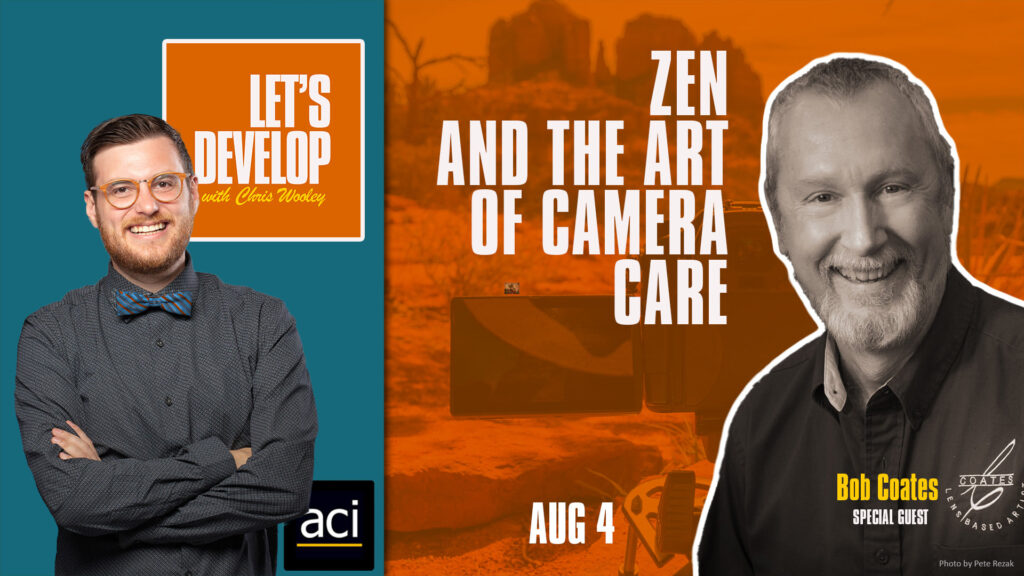 ZEN and the Art of Camera Care with Bob Coates is coming up on Wednesday! Registration is now live on American Color Imaging‘s website.
ZEN and the Art of Camera Care with Bob Coates is coming up on Wednesday! Registration is now live on American Color Imaging‘s website.
Bob is going to share his tips and tricks for taking care of your camera, workstation, and enhancing your workflow. Wednesday Aug 4. Free Registration Required: https://acilab.com/lets-develop/ep9-bob-coates
Yours in Creative Photography, Bob
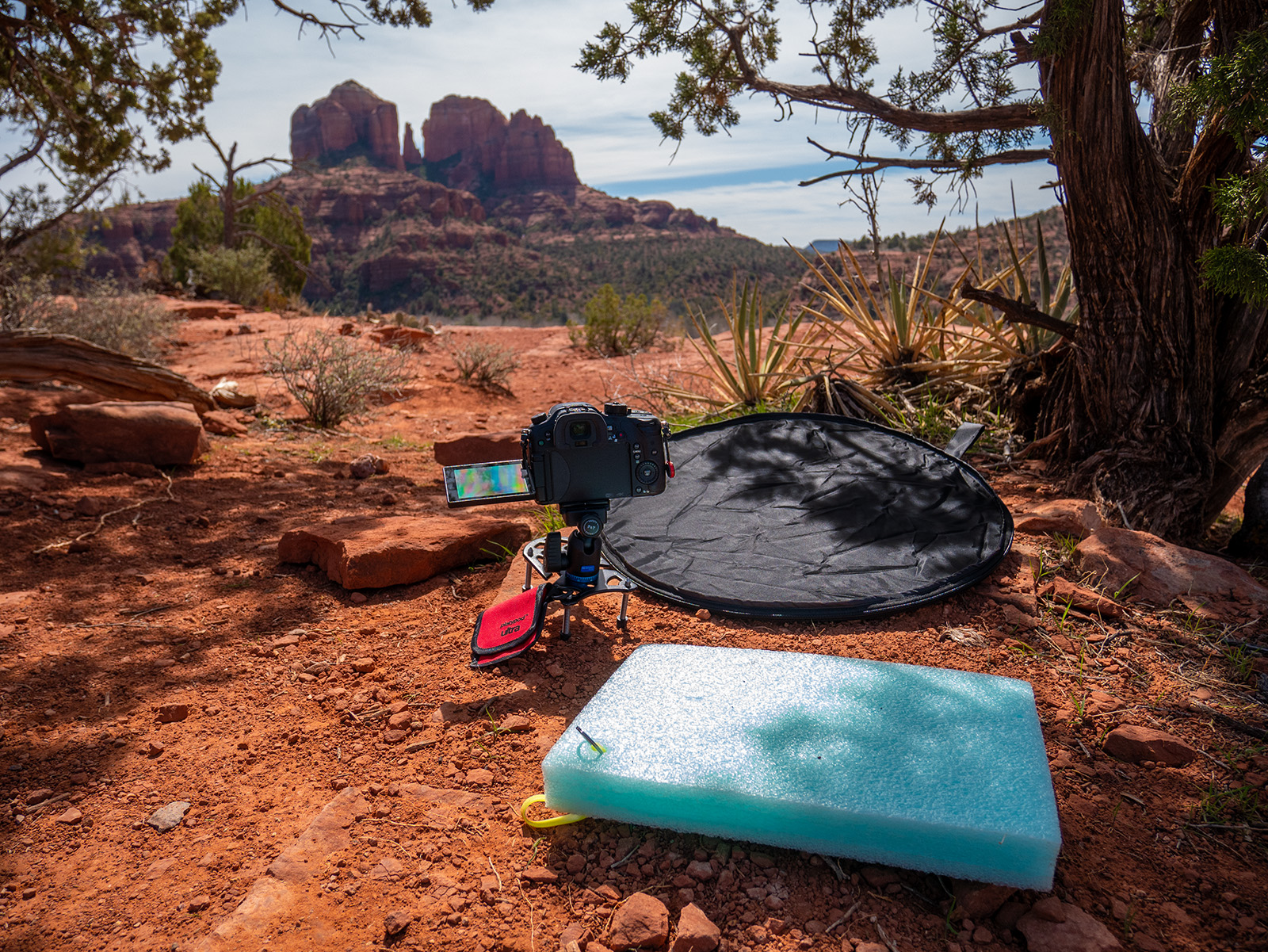
by successfulbob | black & white, infrared photography, inspiration, landscape photography, Lumix GH4, photography gear
Infrared photography
I’ve probably mentioned this before, but using an infrared converted camera increases your chances of coming home with a solid image when shooting in the middle of the day. I upgraded my infrared camera from a Lumix G6 to a Lumix GH4. If you have a camera languishing on the shelf not being used I recommend sending it off to LifePixel Infrared for a conversion. I know I was glad I did!
Midday
Those hours between 10AM and 3PM can be brutal on your images due to the high contrast. Infrared images thrive in that environment. I quite enjoy extending my keeper rate by working with infrared imaging.
Platypod Ultra

From Sedona, Arizona, Cathedral Rock during midday. Renders in an interesting way using an infrared converted camera.
Another tool I find helpful is being able to easily have my camera low-to-the-ground in the Platypod camera support. I can hang the Platypod from my camera bag and since it is very light I hardly notice it’s there until I see a need for it. The Platypod is extremely helpful, especially if you have a flip screen on your camera. The flip screen allows you to be able to frame and focus the scene without having to get down on your belly. Bonus!
Photofocus
Here are a couple articles I wrote for Photofocus dealing with and expanding the uses of an infrared converted camera. Enjoy! Toning infrared images for a different look Infrared and summertime.
Yours in Creative Photography, Bob
by successfulbob | photography
Having written a few books in the past I know that the actual text is only part of the story. If you aren’t working with a publisher a big part of the job is still to be done.
Meet Sara
My friend, Sara Frances shared some ideas in some posts here on successful-photographer. You can read up on those five posts starting here.
If you really want to get into the nitty-gritty of getting your book to market, Sara is now providing an all day virtual class through Professional Photographers of America. Here is her description.
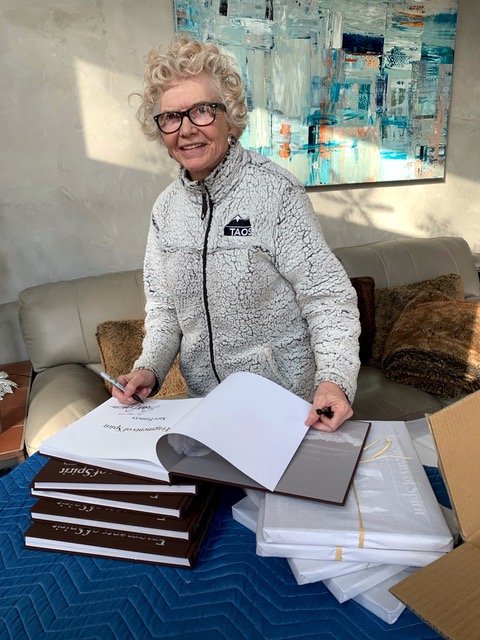
Sara Frances signing books prior to the Millicent Rogers Museum in Taos, NM group show which opened March 11, 2021
Virtual event
Virtual event to allow distant participation. Monday May 10, 9-4:30pm
Turn dreams of a published photography book into affordable reality. Whether for an intimate friend-and-family distribution of 10, or 100, or 1,000 and more, Sara will show how to build on your existing skills in capture, edit, and layout to create a legacy that is also very salable. Creating a book project can augment your reputation and open possibilities for gallery exhibitions and talks.
Publishing
The publishing world has shifted to a majority of independent publishing. Arts, poetry, memoir, and hybrid content image and text books are all experiencing an upswing. In readership as well as buying. Previously the effort typically encountered in technical aspects, but also including concept development and production. And always sales and distribution can be a bit daunting.
All will be demystified in this class with interactive worksheets, numerous tips, and sources for choosing the right printer and distributor to have everything “your way.” Projects at any stage of development welcome.
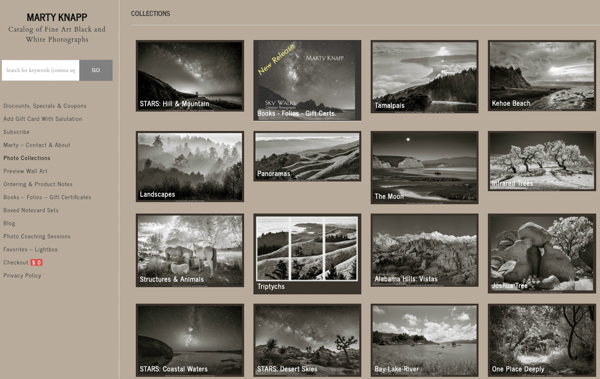
by successfulbob | art books, Guest Post, photography, photography books
The fifth, and final, installment of a five-part series on getting your photo book into print from my photographer friend Sara Frances. Start with Part One.
Getting your Book Out There
Thought you were done, once You’ve done a great design and edited away any little errors?! To make your book findable on the web, on Amazon, in libraries and stores you must have an ISBN (with barcode for the cover) and preferably also a Library of Congress number. The LOC is a free sign-up on line, the ISBN will cost $35 as of last report at Bowker.com. Don’t forget to copyright!
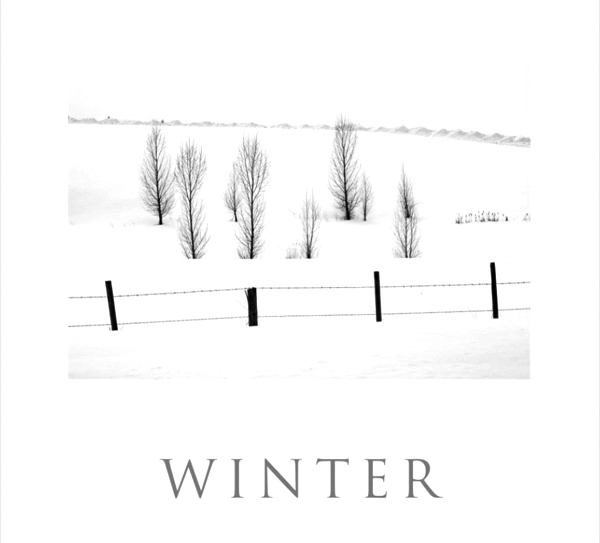
John Fielder is a star with his extensive line of fine landscape books and accessories; this image from Colorado Black on White. Note this is a chapter heading page, reading like a story.
Warehousing, distribution, wholesaling, fulfillment
You’re ready for the next part of the game: warehousing, distribution, wholesaling, fulfillment, and PR. Unless you have a huge garage, insured, heated to accommodate several pallets of heavy, bulky boxes, you need a distributor. And are you planning to take orders, pack and ship, take returns, vet stores for their business licenses and payment, collect and report sales taxes, keep track of inventory? Not a wrong answer; especially for a limited, short run doing this yourself makes sense.
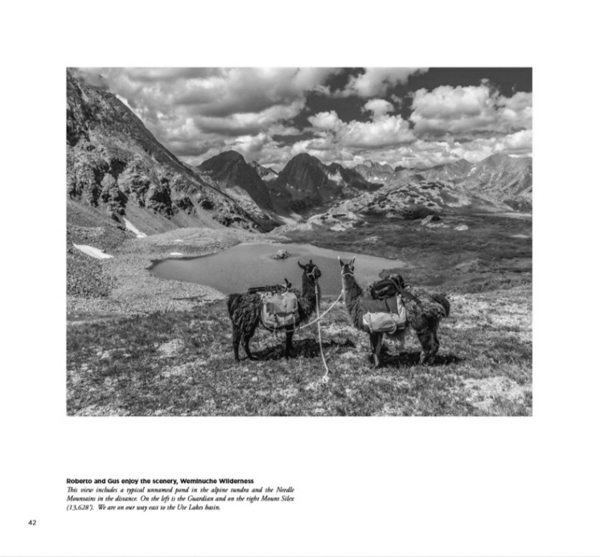
Here’s the reason I enjoy John’s work so much: he writes little experiences about his hikes, the weather and unexpected things he encounters in nature. Not just picture books!
A possible distributor
My distributor, Thin Air Collective is run by Melissa Serdinsky (formerly of Perseus and Ingram). She’s decided to go the small business route to help artists, photographers, memoirists, and poets in particular. She’ll do it all the warehousing, order taking, credit card orders, store vetting, fulfillment, and accounting for you for a minimal fee, and I tell you she knows everyone and everything in this highly volatile industry. Both wholesaling (to an outlet that offers books from many difference publishers as a convenient on-stopper to stores) and special purchase sales (bulk purchase to a library system, non-profit, or corporate incentive gift) are under her purview as well. Tell her I sent you: melissa@thinairpub.com.

Early on, John decided to fill a niche with a series of self-published, regional interest books. He does everything, including high profile web sales and in-person appearances at special interest events, not just book stores. He’s a consummate promoter.
Promotion
But you can’t just rest and expect the orders to come in. PR on virtually all books, even by high profile authors, require a hands-on approach by you! Gallery events, gallery or bookstore or other venue talks (don’t expect a fee, and some venues require a minimum guaranteed book purchase or an organizer fee.) Facebook and Instagram are essential. Blog and postings weekly to lure readers with extra content are essential. No, you don’t continually ask, “Buy my book!” You give readers tips and anecdotes and insider information they can’t get elsewhere. Your public wants a connection. Start a mail list for your book: ConstantContact or iContact seem to be favorites. Offer gallery prints as a special deal along with a signed copy of your hard bound edition. Have links that make it easy for people buy. It’s a continuing job, but the public will love you for the value they receive!

Marty Knapp is another fine promoter. He emphasizes fine art print sales, but books and accessories help support his gallery. His email list is probably equal to John’s—and the model for the rest of us as we get started!
Sara Frances
 Sara is a many-decades Master Photographic Craftsman out of Denver whose artistic focus has always been book making with images. Her albums won PPA merits starting well before digital capture, as well as for what is believed to be the first ever awarded portrait album. She has evolved from daily, shorter-term studio photography into exclusively special projects of long commitment. Her second hybrid photo/memoir art book, Fragments of Spirit, now published under her own mark, Photo Mirage Books, is available mid-December 2020.
Sara is a many-decades Master Photographic Craftsman out of Denver whose artistic focus has always been book making with images. Her albums won PPA merits starting well before digital capture, as well as for what is believed to be the first ever awarded portrait album. She has evolved from daily, shorter-term studio photography into exclusively special projects of long commitment. Her second hybrid photo/memoir art book, Fragments of Spirit, now published under her own mark, Photo Mirage Books, is available mid-December 2020.
Renewing her lifelong interest in creative writing, she was recently was accepted for Lighthouse Writers Workshop’s Poetry Collective, graduating a year later with a forthcoming hybrid work marrying over 275 manipulated iPhone images with 120 poems: What to Wear to Paradise.
Her three-year quest to learn all facets of the art book industry has influenced her to give back with hands-on publishing classes. She is a judge for the Independent Book Publishers Association (IBPA) and for Colorado Independent Publishers Association (CIPA.) She teaches for Osher Lifelong Learning Institute (OLLI) at the University of Denver, for PPA Super One Day seminars, and also mentors hybrid image/text projects.
To find Sara on social media search SaraFrancesPhotographer or email – imagination@photomirage.com
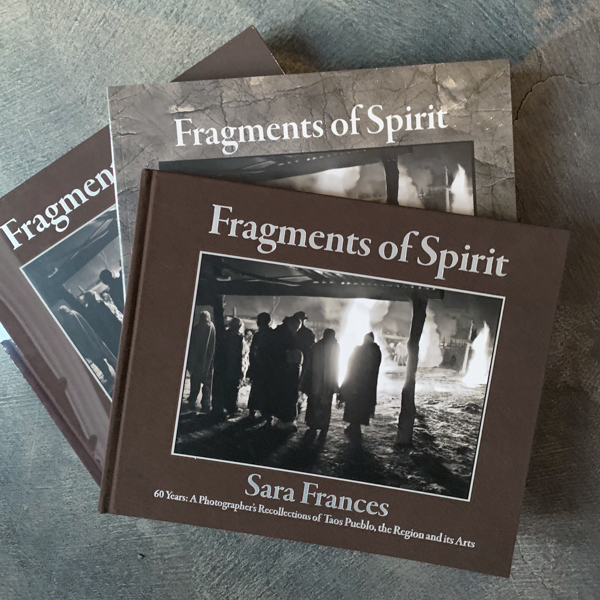
by successfulbob | art books, Guest Post, inspiration, photography, photography books
Number four of the five-part series on getting your photo book into print from my photographer friend Sara Frances. Start with Part One.
You are Designer and Editor
Paying outside services for book consultation, editing, cover, and design are the costs that put a book project out of reach to most photographers. Here’s the good news: your abilities with image making and with Adobe apps give you the tools to do this yourself. The power and facilities of Photoshop now provide almost everything you need; Both publishers and Adobe are noting that many books, including my own Fragments of Spirit, are now designed exclusively in Photoshop. Who better to select, sequence and design your photographic art into a beautiful book?

Cover of my own Fragments of Spirit showing both hard bound and soft bound versions. Note they must have separate ISBN numbers.
What do you need to know?
Once you’ve selected your eventual print house, query them about every detail of the specifications, and make a reference copy of all of this: file size and type, resolution, template, bleed margins, gutter, color space conversion, embedding images, vectors, layering, paper type and weight, cover stock, cover materials and debossing, single page or spreads, PDFs, FTPs, proofing, corrections, timing, delivery. You’ll be responsible for all of these, but it’s like paying yourself back for many things you already know how to do.
Three main pitfalls.
• Conversion to the specific CMYK required may make changes in your original file. Open the original and converted files side by side and compare as your monitor simulates that color space.
Go to View>Proof Setup>Custom and then a drop down menu. This is not sticky, so you have to recheck constantly, and it’s tricky to have two files open with different settings.
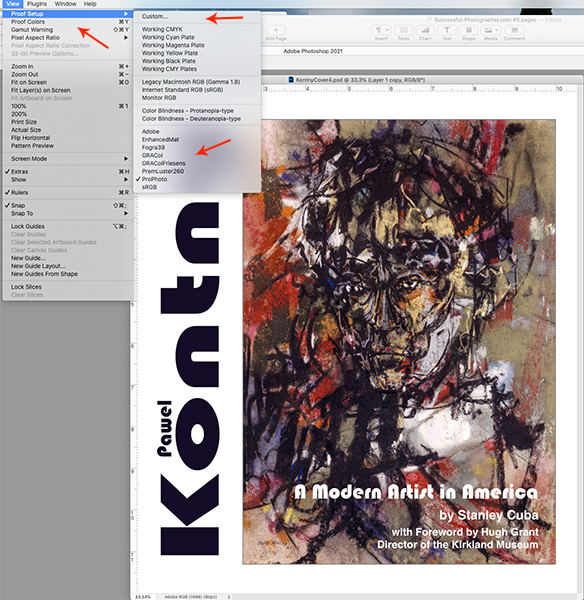
Where to find the Photoshop simulations of different color spaces. Click the Custom menu option for the long list, then save the ones you use most often lower down. Cover of an artist’s retrospective book I am currently designing for a museum.
• Different types of printing will require different contrast, saturation, and sharpness. This is an experience thing, and sometimes quite subtle. But you’re a stickler for precision, aren’t you? Ask (and pay) for a few pages in advance proofing to see directly what you need to do. Continuity is king. Sometimes proofing is with inkjet that will be similar, but not as sharp as the final printing, and possibly have a paper-driven color bias (this is not done on your studio Epson or Canon equipment.)
• Photoshop is a hybrid: not fully bitmap or vector in its file structure. Vector PDF submission is essential for all traditional offset printers I’ve encountered. I’ve found the easiest way to create the vector PDF is to open in Illustrator> convert layers to objects> save out as an Adobe PDF. Then Acrobat will take the single page or spread file and create one document. You’ll be uploading to the printer’s proprietary site.
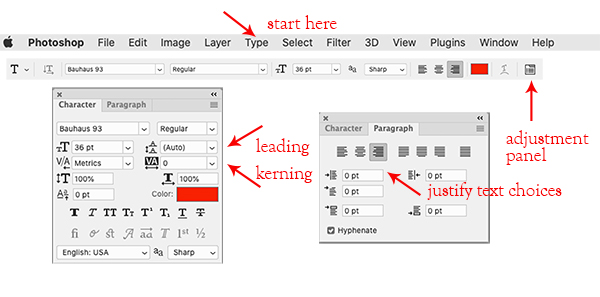
Settings that make you look like a seasoned pro with type manipulation in Photoshop.
Sound like a lot?
Not really, because you are only adding a few nuances to the skills for every piece of commercial work you manipulate and enhance.
Want more detail? Sign up for my Zoom online 8-week class at Osher Lifelong Learning Institute at the University of Denver, Boulder location. All teachers are unpaid volunteers. Next class starting 1/12/21.
Or, look for the next Professional Photographers of America Super One Day!
Sara Frances
 Sara is a many-decades Master Photographic Craftsman out of Denver whose artistic focus has always been book making with images. Her albums won PPA merits starting well before digital capture, as well as for what is believed to be the first ever awarded portrait album. She has evolved from daily, shorter-term studio photography into exclusively special projects of long commitment. Her second hybrid photo/memoir art book, Fragments of Spirit, now published under her own mark, Photo Mirage Books, is available mid-December 2020.
Sara is a many-decades Master Photographic Craftsman out of Denver whose artistic focus has always been book making with images. Her albums won PPA merits starting well before digital capture, as well as for what is believed to be the first ever awarded portrait album. She has evolved from daily, shorter-term studio photography into exclusively special projects of long commitment. Her second hybrid photo/memoir art book, Fragments of Spirit, now published under her own mark, Photo Mirage Books, is available mid-December 2020.
Renewing her lifelong interest in creative writing, she was recently was accepted for Lighthouse Writers Workshop’s Poetry Collective, graduating a year later with a forthcoming hybrid work marrying over 275 manipulated iPhone images with 120 poems: What to Wear to Paradise.
Her three-year quest to learn all facets of the art book industry has influenced her to give back with hands-on publishing classes. She is a judge for the Independent Book Publishers Association (IBPA) and for Colorado Independent Publishers Association (CIPA.) She teaches for Osher Lifelong Learning Institute (OLLI) at the University of Denver, for PPA Super One Day seminars, and also mentors hybrid image/text projects.
To find Sara on social media search SaraFrancesPhotographer or email – imagination@photomirage.com






















